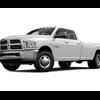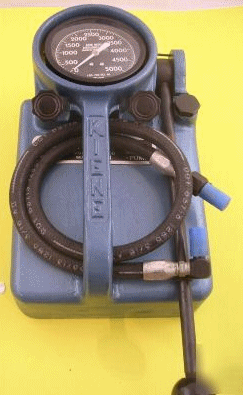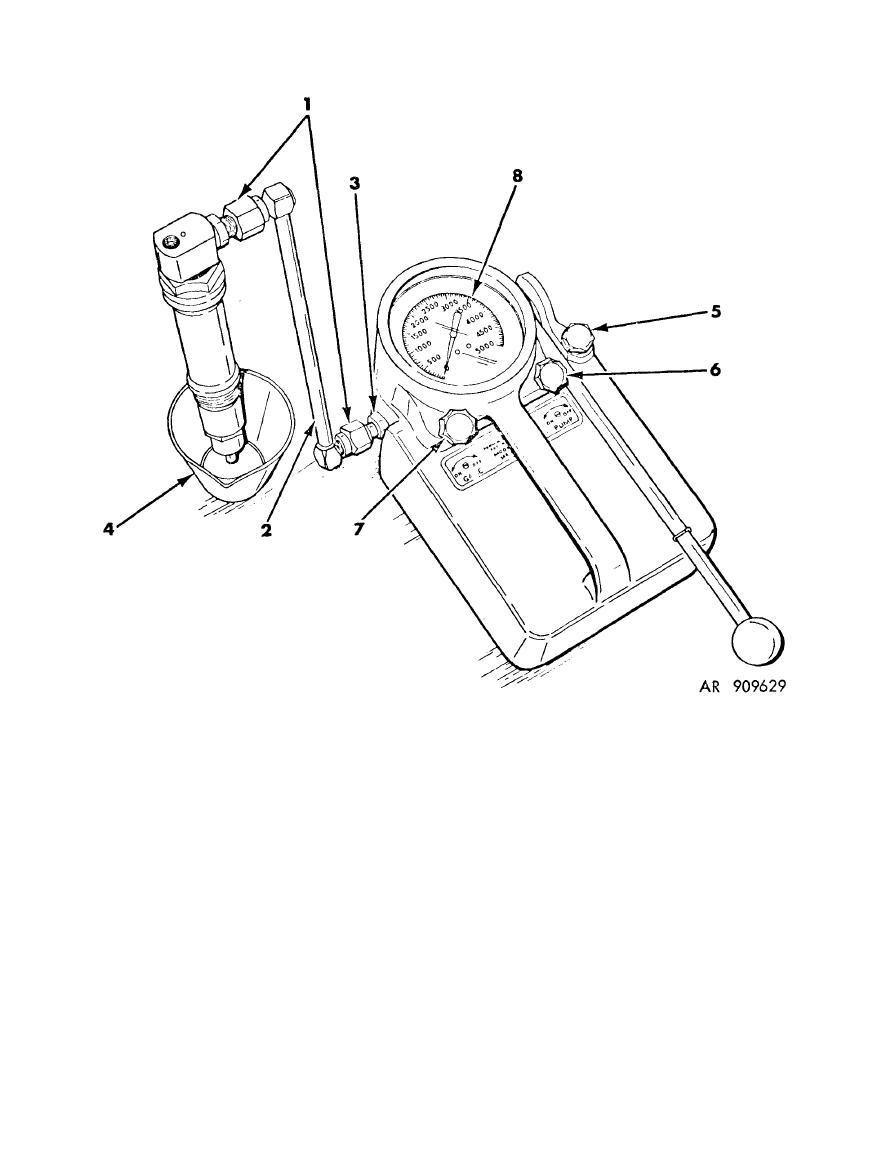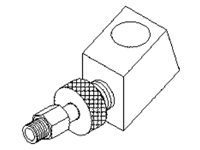Everything posted by JLandry
-
Throwing codes. Help please.
Alternator output is controlled by the PCM. Assuming there's nothing wrong with any of the wiring or the battery temperature sensor, then the PCM is probably at fault and would need to be replaced. John L. Sent from my iPad using Tapatalk HD
-
47 re problems
Have adjusted the bands, especially the front band, per the factory service manual?John L.Sent from my iPad using Tapatalk HD
-
47 re not shifting out of 1st as well as hard cranking after vp44 replacement
Many times... yes. However, the same symptoms can also be caused when the front band strut or the power wedge breaks or falls out. Either of these parts can be easily replaced with the transmission in place. Worst case the front band could be completely broken. That requires removing and disassembling the transmission. If he can't properly adjust the front band... if he can't torque the adjusting screw to the spec in the factory service manual... then that's the indication there's a problem with the front band parts. Often when the strut or power wedge break, pieces will be found in the pan. Best regards, John L. Sent from my iPad using Tapatalk HD
-
47 re not shifting out of 1st as well as hard cranking after vp44 replacement
Regarding the long cranking time:What's the fuel pressure at the VP44 inlet?Regarding the shifting problem:Have you adjusted the bands, especially the front band, per the factory service manual?Regards,John L.Sent from my iPad using Tapatalk HD
-
stumped
See THIS POST over on the Cummins Forum. John L. Sent from my iPhone using Tapatalk!
-
ScanGauge and boost pressure
Unless something has changed recently, the ScanGauge doesn't display boost directly. It displays Manifold Absolute Pressure derived from the ECM, which is boost pressure PLUS atmospheric pressure. When I was running a ScanGauge II, I found the MAP reading being displayed simply stopped increasing at some arbitrary point (I can't remember exactly what) which was well below maximum boost (stock level) even though the boost pressure was still increasing. I contacted ScanGauge about this phenomenon and they said it was the fault of the ECM's external data stream (or something to that effect). I've since switched to using an UltraGauge and it exhibits the exact same behavior. The bottom line: In my limited experience, using either a ScanGauge or an UltraGauge to monitor boost pressure is a waste of time. A good mechanical gauge is the way to go. Best regards, John L. Sent from my iPad using Tapatalk HD
-
Injectors
Not a thing if you'll cover the shipping. The important question is what will you do when you find out the pop pressures are all low and the nozzles leak prior to popping off? I guess the point I'm trying to stress is that you're probably wasting your time and money just having them tested... unless you're morbidly curious about how bad they really are. If they have 200k miles on them, at a minimum you'll need new nozzles if not the entire injector. Anyway, let me know if you want to send them over for testing and I'll PM you my address. Best regards, John L. Sent from my iPad using Tapatalk HD
-
Injectors
You're correct. However, somewhere between 75,000 to 100,000 miles they won't meet factory pop pressure specs anymore and the nozzles will leak. Assuming nothing else major goes wrong, this gradual deterioration doesn't seem to matter much. They're tough injectors! Regards, John L. Sent from my iPad using Tapatalk HD
-
stumped
Question: Have you tried hot wiring the VP44 to verify the engine will run without any connection to the ECM? Doing this would eliminate the possibility of a bad ECM or CTM (anti-theft). The engine only needs fuel (via a hot wired VP44) and air to run. Regards, John L. Sent from my iPad using Tapatalk HD
-
Injectors
AP, If you ship your injectors over to me (near Seattle) I'd be happy to bench test them for you and send them back. I have a couple of pop testers and all the appropriate fittings. However, if your injectors have more than 75,000 miles on them, then I can almost guaranty you it's a waste of time as the nozzles will be leaking (pissing) prior to popping off and they'll be opening at a lower pressure than spec. Low pop pressure can be adjusted by changing shim thickness under the spring inside the injector, but leaks prior to popping can't be corrected... at least that's been my experience. The only real solution for a leaky nozzle is to replace it with a new one... or buy an entirely new new injector of course. Best regards, John L. Sent from my iPad using Tapatalk HD
-
stumped
As you discovered, fuel CAN pass through a VP44 when it isn't operating. Here is a quote from Chrysler training publication 8169997178 "Cummins Electronic Fuel Injection" The VP44 injection pump is not self priming. At least two high pressure fuel lines atthe cylinder head must be loosened in order to bleed air from the system. The presence of fuel in the high pressure fuel lines at the cylinder head is not proof of the VP44 pump operating. Fuel can pass through the VP44 pump when it is not operating. Strong spurts of fuel at the loosened cylinder head fitting indicate that theVP44 pump is operating. Regards, John L.
-
code 1693?
Why the factory service manual of course! Try THIS LINK to download a copy. John L.
-
Early shifting and surging??
Regarding the transmission shifting issue...Try replacing the transmission output shaft speed sensor located in the tail housing and see if that fixes it. It's an inexpensive part available at most any auto parts store and literally takes 5 minutes to remove and reinstall.Regards,John L.Sent from my iPad using Tapatalk HD
-
injector shims
The best place to look for a good deal on one is probably eBay. I watched eBay for awhile and ultimately netted a heavy duty Army surplus injector tester made by Kiene Diesel (a Model DT-1300). It's capable of producing up to 7,500 psi, but mine has a 0-5,000 psi gauge. It came in a nice metal storage case complete with accessories. This illustration shows a sample setup when in use. When testing 24v Bosch injectors, you must use a Miller SPX 8301 adapter. I bought one on eBay also. Best regards, John L.
-
injector shims
Correct.They!re all the same diameter.As stated before (for clarity), the thickness of each shim may vary.John L.Sent from my iPhone using Tapatalk!
-
injector shims
Actually, the center hole isn't needed in the shims. It serves no purpose as fuel exits out the side of the injector body. I'm using solid shims in my injectors right now.The shims are 10mm in diameter. <- CORRECTION: The shims are 8.5mm in diameter. I just measured one.Regards,John L.Sent from my iPad using Tapatalk HD
-
Idle miss at stops
Are you sure your fuel pressure gauge is accurate? It's always a good idea to get a "second opinion" by checking the fuel pressure using a different (accurate) test gauge.For that miss, it couldn't hurt to disconnect and reconnect the VP44 and ECM connectors to clean the contacts.Good luck,John L.Sent from my iPad using Tapatalk HD
-
code 1693?
It means the PCM (or ECM) is reporting it detected a trouble code set in the other module. It's essentially one module finger pointing at the other letting you know the other set a trouble code. By itself, it's a useless except to alert you may need to dig deeper.However, sometimes the P1693 will linger after the original trouble code in the opposite module has been cleared or reset.In short, by itself it's nothing to worry about.Best regards,John L.
-
Injector Pop Pressure
Based on my personal experience, you won't be able to completely stop that "pre-pop pissing." It sure can't hurt to try though. I'm sure you already know this, but for the sake of others reading this thread... Adding or subtracting shims only adjusts the pop-off pressure and won't help a worn tip seal any better. Best regards, John L.
-
reflash with a drb3?
Regarding DRBIII communicating with the ECM:I almost hate to ask this, but did you have the ignition switch ON when you connected the DRBIII?Was the DRBIII able to communicate with any of the other vehicle modules such as the PCM, CAB, CTM, etc.?Is a generic scan tool able to communicate with the ECM?If the DRBIII won't connect to any module, then the CCD bus (the Chrysler communication network in the vehicle), or the DRBIII itself might be faulty. If it won't connect to only the ECM, then it's likely there's something wrong with the ECM or its connection to the CCD bus.Regarding updating the ECM software:No you don't need a memory card in the DRBIII to flash the ECM's software, but having one on hand makes the task a bit easier. Yes the flash files are on the ITIL/ISIS disk. If the ITIL/ISIS disk is old and you need newer versions of the flash files, you can download them from Chrysler's TechAuthority web site.Without getting into too much detail here (it would take me several pages of instructions to cover all the nuances), at a minimum you'll need an RS-232 DB9 to USB serial cable, a computer running Windows, and the "Benchtop Programmer" program found on the ITIL/ISIS DVD to load flash files into the DRBIII's memory.If you want to more information, feel free to PM or email me with your telephone number and I'll call you.Best regards,John L.
-
Injector Pop Pressure
A nice new set of tips would be just the ticket to go with those injector bodies! To adjust pop pressure when installing new injector tips (or recalibrating existing tips), I bought a metric shim stock punch set from McMaster-Carr so I could make my own custom-thickness injector shims out of stainless steel sheet stock. Going by memory, the shims need to be 10mm in diameter (CORRECTION: The shims are actually 8.5mm diameter). I was afraid of using aluminum for shims thinking they wouldn't hold up to the injector's vibrations, would eventually wear down, and the pop pressure would drift over time. Regards, John L.
-
Injector Pop Pressure
I bought a military surplus pop tester off eBay a couple of years ago and had almost the same experience with my stock injectors. With ~113,000 easy miles on them, they all popped off at lower than spec pressures and most of them started "pissing" fuel prior to popping off. I took the injectors apart, cleaned them immersed in solvent in an ultrasonic tank, and then reassembled them. While I was able to adjust the pop pressures using stainless steel shims of varying thickness in the injectors, I wasn't able to stop the pissing. Apparently the tips were worn enough so they wouldn't seal properly any longer. Interestingly, my truck started and seemed to run just fine. I had a set of used stock injectors with only ~25,000 miles on them which I also cleaned and tested. They all popped off within spec and didn't leak prior to popping. I installed them and now have 25,000 more miles on them (~50,000 total miles). I intend to pull them out this summer and swap in my original injector bodies with new RV275 type tips. John L. Sent from my iPad using Tapatalk.
-
Newbie from Oregon - Michael from ISSPRO
Ditto! The only reason I haven't yet ditched my 0-30psi DiPricol fuel pressure gauge in favor of an Isspro EV2 gauge is that 0-40psi scale... too wide a range for my truck's stock level fuel pressures. My other gauges are Isspro EV2’s... really like 'em. John L. Sent from my iPad using Tapatalk.






